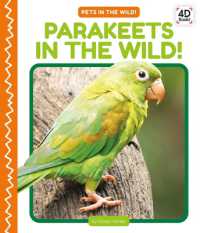Full Description
In the aftermath of the sixteenth-century Spanish conquest of Mexico, Spanish friars and authorities partnered with indigenous rulers and savants to gather detailed information on Aztec history, religious beliefs, and culture. The pictorial books they created served the Spanish as aids to evangelization and governance, but their content came from the native intellectuals, painters, and writers who helped to create them. Examining the nine major surviving texts, preeminent Latin American art historian Elizabeth Hill Boone explores how indigenous artists and writers documented their ancestral culture.
Analyzing the texts as one distinct corpus, Boone shows how they combined European and indigenous traditions of documentation and considers questions of motive, authorship, and audience. For Spanish authorities, she shows, the books revealed Aztec ideology and practice, while for the indigenous community, they preserved venerated ways of pictorial expression as well as rhetorical and linguistic features of ancient discourses. The first comparative analysis of these encyclopedias, Descendants of Aztec Pictography analyzes how the painted compilations embraced artistic traditions from both sides of the Atlantic.
Contents
List of Figures
List of Tables
Acknowledgments
Chapter 1. Paintings from the Past
Chapter 2. Graphic Complexity in New Spain
Chapter 3. The Encyclopedic Tradition in Europe
Chapter 4. The Evangelical Project and Mendicant Investigators
Chapter 5. Early Compilations: Codices Borbonicus and Mendoza
Chapter 6. The Mid-Century Encyclopedias: Codices Telleriano-Remensis and RÍos and the Magliabechiano Group
Chapter 7. DurÁn and SahagÚn: Cumulative Expositions of the Late Sixteenth Century
Chapter 8. Memories in Figures
Notes
References Cited
Index








